SUMMARY
This is AI generated summarization, which may have errors. For context, always refer to the full article.
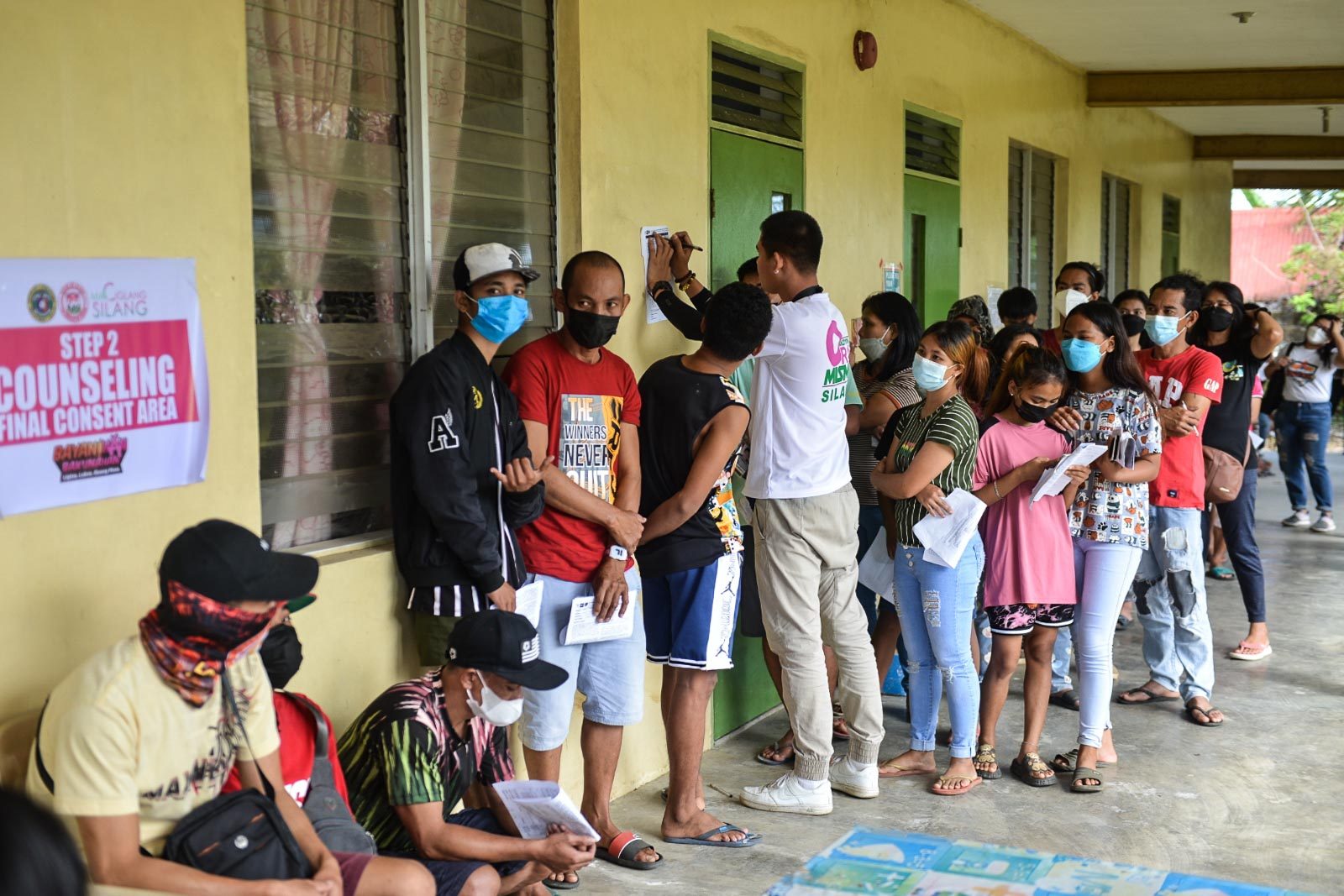
Conclusion
Part 1: Nearly a year into PH vaccine drive, 8 regions yet to receive enough doses
With the highly contagious Omicron variant already speeding through provinces, and the country moving closer to a presidential election in May, local officials have been pressed to meet the national government’s vaccination targets – and fast. In fact, they have to accomplish that within just a few weeks.
Since the Philippines’ COVID-19 vaccine drive began in March 2021, it has reached at least 53% of the total population, though officials want the figure to reach at least 70% by March 2022 and 90% by June. However, although the government set out with ambitious targets, a faster vaccination campaign had been hindered by red tape and a lack of urgency on the part of the national government months before the first dose was legally administered. A shortage of vaccines likewise made impossible any hope that the majority of Filipinos would be fully vaccinated by the end of 2021.
Now, the inequitable distribution of vaccines across regions threatens to keep goals further out of reach as doses have been mainly concentrated around the Luzon island group nearly a year since vaccines became available locally. A wider, more equal distribution of shots is difficult to achieve with local communities’ supply tied closely to how efficiently they are able to roll out doses.
These challenges create significant problems in the country’s fight against the virus. With Omicron already quickly spreading throughout the country, the vaccination pace in most regions is too slow to prevent deaths that could have been avoided were more vaccines made available in all parts of the country weeks earlier.
Aside from this, having vaccine supply linked to limited storage space – which in turn depended on how fast local governments could administer doses – has done little to help disadvantaged provinces that have long had difficulty implementing wide-scale public health programs.
On the local level, the access to vaccines throughout a greater part of the country outside Metro Manila and Luzon has been held back by perennial problems in the Philippines’ health system, including a lack of health workers and the absence of easily accessible primary health centers.
An analysis of the Philippines’ COVID-19 vaccine program done by Rappler and public health research firm EpiMetrics found that, nearly a year into the government’s vaccination drive, a large gap between the number of Filipinos willing to get a shot and those who have actually been fully vaccinated remains. This suggests that despite the recent deluge of doses, efforts to get doses quickly into peoples’ arms have fallen short.
Whereas supply was a major barrier in 2021, logistical and accessibility issues are currently the largest bottleneck in the vaccine drive on a national scale. We also take a look at how people’s willingness, as well as a lack of equitable supply, can delay widespread coverage across the country.
Spotty access slows rollout
In places where demand for vaccines is high and ample supply is available, logistical hurdles continue to pose a significant bottleneck. In an interview with Rappler in December 2021, Philippine Disaster Resilience Foundation chief resilience officer and public-private Taskforce T3 member Bill Luz cited the lack of manpower as “the real constraint.” A vaccination team in the Philippines’ rollout usually consists of six people carrying out clinical and non-clinical tasks.
“One of the challenges has been in the early days people would get sick. So not only tired, but fatigued…. Even though they (vaccination teams) are among the first to be vaccinated, they’re still exposed, so there’s some risks. That will continue to be one of the big challenges we have moving forward, just getting enough people out there to do the job,” Luz said. “There are areas where you have enough, and there are areas where you don’t have enough.”
In geographically isolated areas, the lack of personnel means health workers play the role of vaccinator, manager, and coordinator, to name just a few.
Jory Allorde, a rural health worker serving in Barangay Dikapinisan, a coastal village of 2,500 people in San Luis, Aurora, told us there were more than enough doses to vaccinate all willing people in his community. However, arranging a two- to three-hour boat ride into town, gathering additional health personnel, ensuring stable power supply, and facilitating documentation with barangay officials, regional offices, and community members took up more time than actually getting doses into people’s arms. These were tasks Allorde had to manage all by himself.
Securing vaccines onsite is likewise not a guarantee that things will go smoothly, Allorde told us. With erratic electricity, doses couldn’t be stored in Dikapinisan overnight, leaving health workers to organize a series of resource-intensive trips to vaccinate remote communities. The tedious process meant that vaccinations happened about once a month in the community, rather than daily or weekly as done in other areas of the country.
With so few health workers available in these areas, conducting vaccination activities also means other health services, like elderly and pediatric check-ups, have to be put on hold. But even then, emergencies can’t be avoided. Allorde once had to shift his attention away from administering shots when a woman in the community went into labor, leaving one less person to vaccinate residents who lined up to receive their COVID-19 vaccine.
As the Omicron-fueled surge has shown, the lack of manpower is made more complicated by the increase in personnel infected with COVID-19. At the same time, there is greater need for health workers to divert efforts back to treating a growing number of people needing hospital care. So far, the government is counting on expanding a pilot run of providing vaccines through pharmacies to increase Filipinos’ access to shots.
Among a key priority group – senior citizens – operational issues likewise persist, preventing more elderly people from getting vaccinated.
An independent nationwide study conducted by Dr. John Wong, epidemiologist and senior technical adviser at EpiMetrics, found that long waiting times in vaccine sites, lacking a companion, encountering difficulty in securing appointments, and far distances from vaccination centers were among the top reasons the elderly found it burdensome to get vaccinated.
Other hurdles that made access difficult for seniors included a lack of transportation to sites and the “inconvenient” operating hours of these centers.
How smoothly vaccines were rolled out likewise depended on how fast local governments could update data on vaccinations. With the performance of local officials measured against how fast doses in storage were administered, ensuring the information of each day’s vaccination activities was reflected in the national government’s system determined how soon more doses would arrive in communities.
But it’s often the case that vaccinations turn out to be an easier part of the rollout, while encoding details found on each person’s vaccination card was what required more time and effort, Luz said.
In trying to iron out these kinks, vaccine czar Carlito Galvez Jr. recently laid out several operational questions the government wanted to figure out – like what peak days for vaccinations were in different LGUs, if nighttime and mobile vaccinations could be accommodated on a regular basis, and if local officials could identify teams to focus solely on managing vaccination data.
On top of this, local officials across six regions hit by Typhoon Odette in December 2021 were forced to divert resources to provide emergency food, medicine, and shelter just as vaccination efforts were gaining steam. “[Odette’s] impact in major areas across the Visayas and Mindanao are still being felt and being addressed by the government to this day,” Galvez said in a statement on Saturday, January 22.
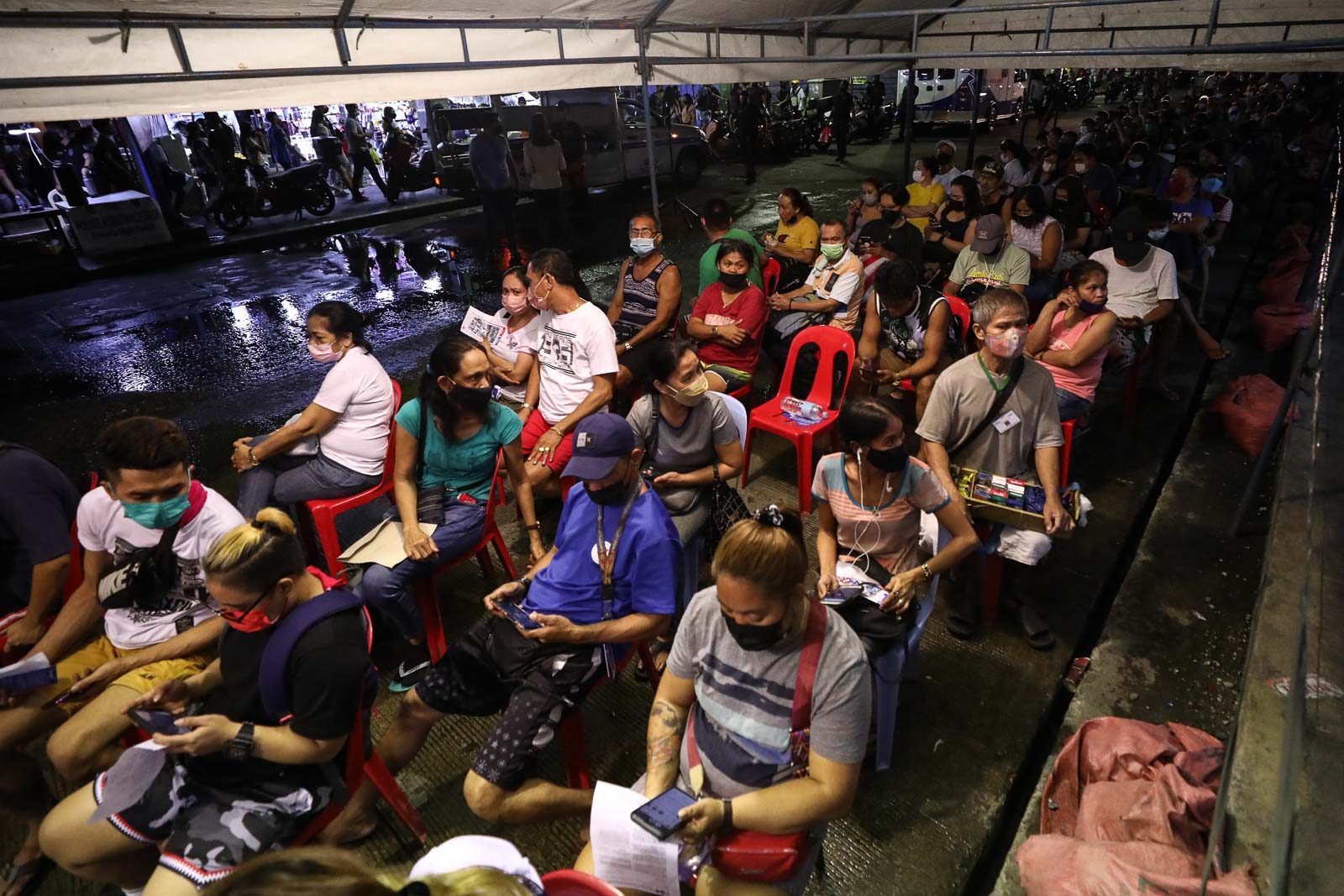
Tackling hesitancy still worthwhile
With vaccine hesitancy continuing to decline in the country, is uncertainty or unwillingness to get a shot still a problem that needs addressing? In 2022, one key challenge for the government will be determining where slow uptake is a result of hesitancy as opposed to unequal distribution or logistical snags.
It’s worth noting that Filipinos’ willingness to get vaccinated against COVID-19 has significantly increased since shots were available in March 2021. A Social Weather Stations survey conducted in December 2021 showed just 8% of Filipino adults were still unwilling to get vaccinated as opposed to the 33% who were unwilling in May 2021. As for those who expressed uncertainty, the portion of adult Filipinos sharing this sentiment fell to 6% from 35%.
Finding these vaccine holdouts on a local level is expected to be an obstacle, but one worth the national government’s attention, despite dwindling hesitancy. With the virus becoming more transmissible, experts say it is increasingly unlikely that herd immunity against COVID-19 can be achieved.
“If we combine the efficacies of all the different COVID-19 vaccines used in the country – a weighted average efficacy of 79% – we would have to vaccinate the entire Philippine population in order to protect everyone from severe disease and death,” said Dr. Carlo Emmanuel Yao, a researcher at EpiMetrics.
“On top of that, we must vaccinate the population fast enough before a more novel and concerning variant arises through mutation,” Yao added in an analysis completed before Omicron had spread in the Philippines.
But data on vaccine hesitancy in communities at the province, city, or barangay level is murky at best, or non-existent at worst. What government officials have on hand is a snapshot of hesitancy at the nationwide and island region-level.
In some areas, hesitancy can exacerbate the logistical hurdles that health workers need to overcome just to bring vaccines nearer to Filipinos. “There are still large numbers of people who don’t want to be vaccinated for their personal reasons, and there are places where logistics are a problem,” former health secretary Manuel Dayrit said.
At the same time, misinformation on social media has generated skepticism even among members of isolated communities. For instance, in Agusan del Sur, Dayrit shared, “they’ve really have had to go out to vaccinate IPs (indigenous people)...and what was interesting was, when they got to the Manobos, they also had brand preferences.”
For some, the hesitation to get vaccinated may run deep. Allorde said some residents still cited the 2017 Dengvaxia dengue vaccine controversy when asked why they refused to get a COVID-19 shot for now. “There’s still some fear,” he said. Health workers have tried to abate concerns left by the Dengvaxia scare by conducting house-to-house campaigns, where they promote the COVID-19 shot and share experiences after getting vaccinated.
In this scenario, tailored responses that address the varied reasons for individuals’ skepticism is one way to go. Medical anthropologist Gideon Lasco and health researcher Vincen Gregory Yu, both of the University of the Philippines and Ateneo de Manila University, wrote in a paper that involving primary care workers, religious, and civil society groups in fostering conversations with wary individuals could build confidence in vaccines.
This sort of approach puts a premium on feedback and “showing people that their government is responding to them,” they said.
Building trust this way could also address scenarios where hesitancy may be less about a lack of information on shots than it is about mistrust in government.
“Usually the response is the government reassuring the public that this is safe, we’ve looked at it, our FDA (Food and Drug Administration) has approved it…. This is not just an information deficit problem, it's also a trust deficit problem. So the information is there, but it matters which person is giving that information. Do they trust that person?” said EpiMetrics' Wong.
High stakes race
Experts have stressed the urgency of increasing the portion of the population protected by vaccines across the world as the spread of the virus can give way to more dangerous forms of COVID-19.
About half of the total population of the Philippines still lacks protection from vaccines. This number alone is a big enough threat to the country’s health systems in the event further surges take place. It also continues to provide the need for quick action from the government.
Faced with the reality of limited time and resources, experts have continued to urge the government to prioritize vaccinations among the elderly and other high risk groups. Doing so would have the largest impact in protecting the country’s health systems and, in turn, allow larger parts of society to continue operating. “Our primary goal is to prevent deaths, and we know 70% are from the elderly,” Wong said.
Health officials have raised plans to hold a vaccination day for senior citizens to reach over 3 million remaining individuals in the sector who have yet to be inoculated. The Philippines has already shown it is capable of vaccinating this large a number in a single day, after a three-day national vaccine drive in late 2021 saw the country administer a high of nearly 3 million doses in just one day.
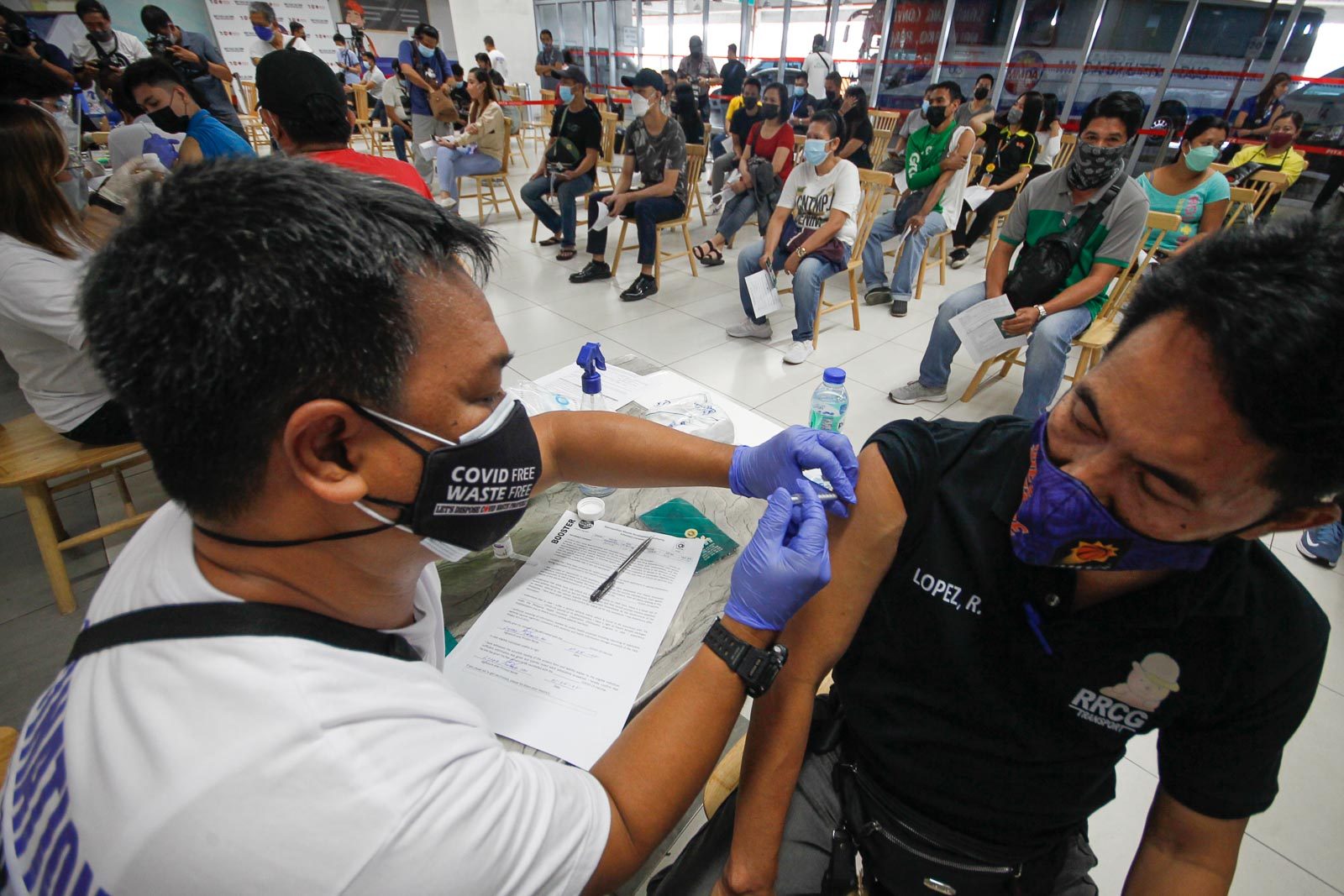
Seizing the momentum, the vaccination drive extended to a week-long effort that reached 9.9 million people. With a special working holiday declared, local vaccine sites operating for longer hours, workers given leeway to get vaccinated during work hours, and over 8,000 sites mobilized – the achievement was largely made possible by easy access.
That push was enough to see the Philippines register one of the world’s fastest vaccination rates, placing it beside the likes of the United States, India, and China. Consider then – what if a vaccine drive as intensive as this is done for the elderly?
“We could reduce deaths by 70% if we could just do this (vaccinate the elderly)," Wong said.
"If we can do 3 million a day for just a short, short period, let's say seven days, [we could vaccinate] 21 million…. If we can just reach that level, maybe a one-week intensive phase, and then after that, maybe three million once a week, I think that's better than doing it slowly over several months again,” Wong added. “Time is of the essence.” – Rappler.com
Add a comment
How does this make you feel?
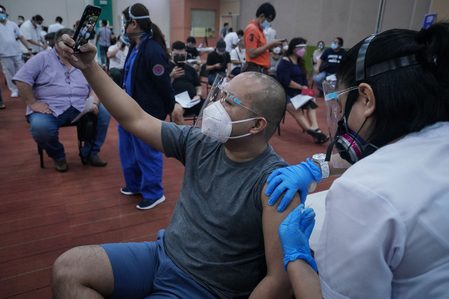

![[Rappler’s Best] US does propaganda? Of course.](https://www.rappler.com/tachyon/2024/06/US-does-propaganda-Of-course-june-17-2024.jpg?resize=257%2C257&crop=236px%2C0px%2C720px%2C720px)

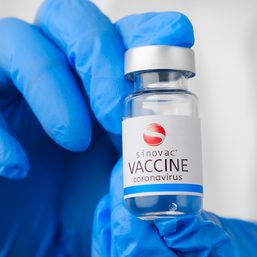
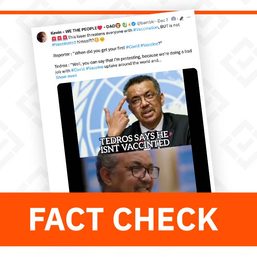
There are no comments yet. Add your comment to start the conversation.